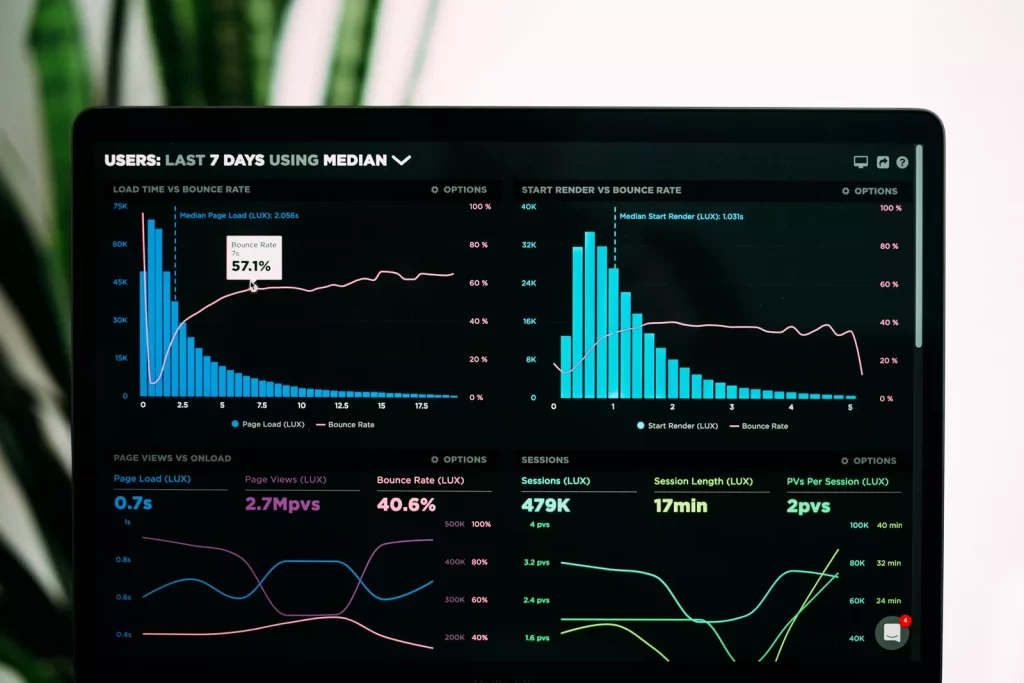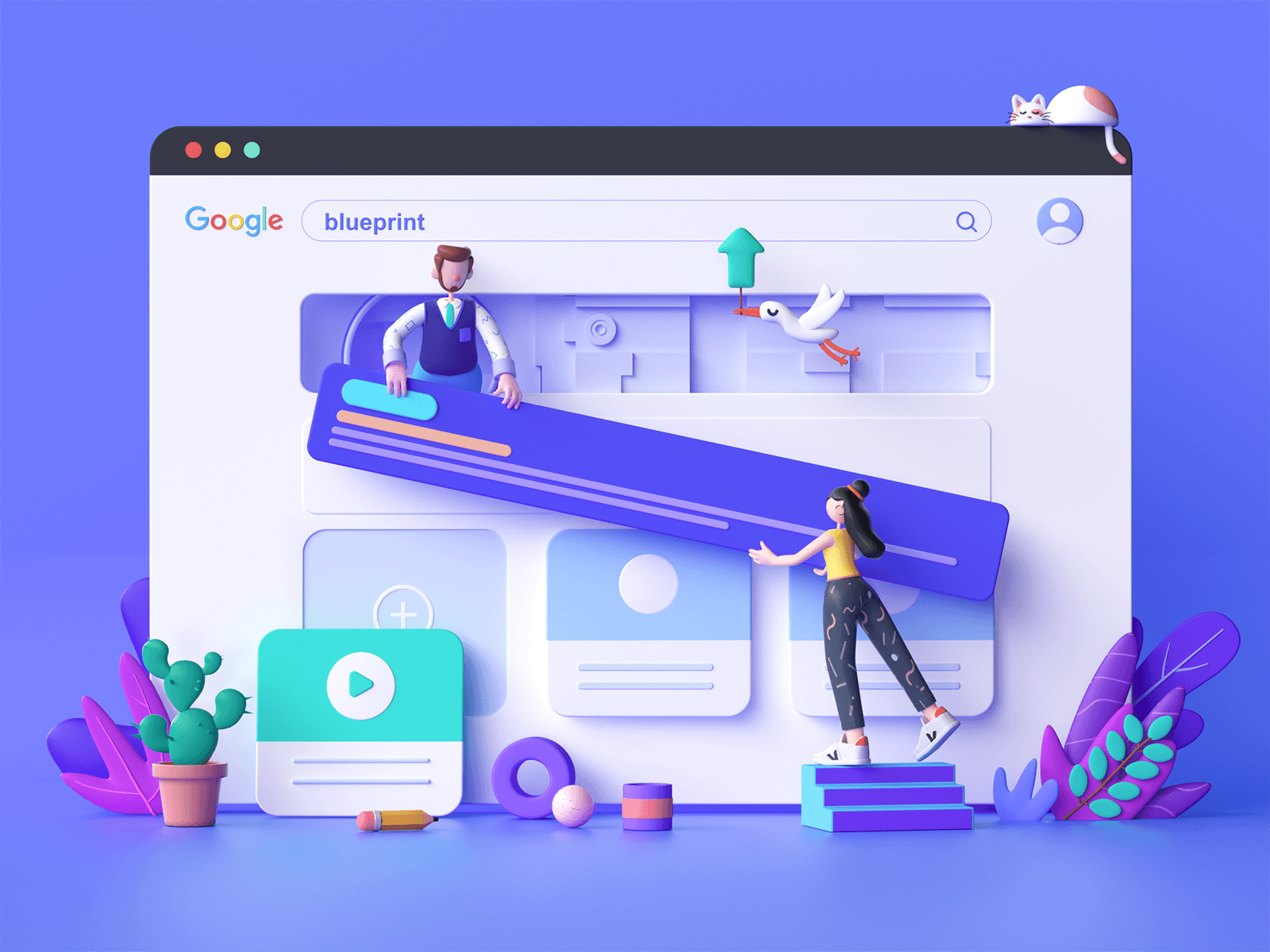
This article explores how generative AI is reshaping B2B customer experience strategies for maintaining authenticity and the future of businesses that embrace AI while remaining human-centric.
Fuel your innovation journey with millermedia7’s dynamic category. Explore breakthrough ideas, emerging trends, and expert insights for staying ahead of the curve.
This article explores how generative AI is reshaping B2B customer experience strategies for maintaining authenticity and the future of businesses that embrace AI while remaining human-centric.
Artificial intelligence is revolutionizing software development by automating repetitive tasks, enhancing testing accuracy, and streamlining debugging processes. This transformation allows developers to focus on creative solutions and strategic challenges. As AI reshapes the industry, adaptability and continuous learning become crucial for staying ahead in an AI-driven future.
Stay ahead of the competition with rapid product innovation. This article provides insights into how you can achieve remarkable results by investing in continuous collaboration.

Remember how just a couple of years ago we were frequently discouraged by SIRI not being able to understand what we were saying and constantly answering the wrong question? Our cars had trouble with voice recognition and more often than not were calling the wrong person. Those of us who have accents had an even harder time talking to our devices and hoping to be understood. How many jokes have you heard about autocorrect? It is amazing to see how quickly technology improved in just a few years. Clearly, AI is already being used in a variety of ways to improve UX today.
Every one of us experiences the effects of artificial intelligence in our everyday life.
We all can agree that as technology continues to advance, AI will revolutionize UX design in a number of ways. Here are some of the most obvious changes we can expect to see:
But like with everything in life, it is important to know not only the strengths and benefits of the new technology but also the potential dangers.
Let’s take a deeper look at each one of those items.
Advanced data analysis can help UX researchers to analyze user data more effectively and accurately. It can provide insights that can lead to more personalized experiences. However, just like in market research, collecting more data doesn’t necessarily help with understanding its meaning. Designers and researchers may be tempted to rely too heavily on data instead of considering user feedback and intuition.
AI can help navigate the complexity of real-time personalization by quickly analyzing user behavior and preferences. The latter will allow to better adapt to the needs of individual users. Personalization, in its turn, can help to further improve chatbots and voice assistants. However, some users may be uncomfortable with the level of personalization that AI can provide. Hence, designers should be ready to face reluctance to accept the new technology solutions on the customer side.
There is a number of daunting and tedious tasks that UX designers do on an everyday basis. AI can help speed up design processes. By generating design variations such as layout, typography, and color selection, designers will be able to quickly test different assumptions. On top of that, design areas that can benefit from AI extend to design systems and much beyond.

At the same time, designers relying too much on automation can cause a loss of creativity. It can also shift expectations on how long the design process should take and promote the so-common “anyone can do it” attitude.
We also should not forget that automated systems require upkeep and maintenance. So designers must invest time and resources into maintaining and improving their automation tools. Always keep in mind, automation should be something that complements, rather than replaces creativity and thought.
One of the interesting areas where AI can make a significant difference is accessibility. Accessibility refers to the practice of designing products and services that can be used by people with disabilities, such as visual or hearing impairments. Companies should start looking into AI to help them with 508 compliance.
AI-powered voice assistants, automatic captioning, image recognition, and natural language processing (NLP) are critical elements of enabling people with disabilities to work seamlessly and productively. Voice commands can provide an accessible experience for people with visual or motor impairments. Automatically generated captions for videos and other media can make them accessible for people with hearing impairments. Besides, image analysis and description can provide users with visual impairments with the much-needed ability to understand visual content. And finally, chatbots and other conversational interfaces help people who need assistance with cognitive or language processing.
The use of AI can help developers of those systems generate code to provide much-needed features. In this case, we can view developers as users of intelligence-powered tools that increase their productivity.
It is hard to overestimate the importance of testing and feedback in any design process. AI can improve designers’ efficiency and effectiveness by automating testing processes, analyzing user feedback, identifying patterns and trends, and A/B testing.
Predictive analytics and NLP can be used to anticipate user behavior, extract important insights, and better understand user needs.
However, it is critical for designers to understand the limitations of AI and incorporate human feedback and intuition into the design process, balancing the insights provided by AI with the creativity and empathy of human designers.
Predictive analytics uses machine learning algorithms to analyze user data and predict future user behavior. Everything we’ve talked about in this article heavily relies on predictive analytics. AI helps with the analysis of large volumes of user data, making real-time predictions, optimization of user experiences, and testing multiple design variations.

Yes, AI can help designers do their work, but let’s not forget about the enormous help that AI can provide for our users in their day-to-day work.
Incorporating generative AI into email applications and text editors can help people to communicate more effectively by providing them with initial structures of emails, PowerPoint presentations, and documentation.
Bringing AI into internal corporate portals can save time for thousands of employees during the onboarding process, or when seeking for right people or procedures within the organization.
Thousands of existing applications currently heavily rely on people using other applications or search engines (Google, YouTube, etc.) to provide additional assistance with their products. Imagine how powerful and productive those products could become if by using AI they could seamlessly bring this external content into their products.
We spoke a lot about the multiple positive effects that AI can have on design processes, but let’s not forget that there are multiple areas in which using AI (especially in its current state) can be rather dangerous.
AI algorithms are not perfect, and designers as well as their managers must be aware of the limitations of the technology they are using. The correct interpretation of user feedback is pivotal for a designer. However, the use of AI does not always guarantee accuracy.
The accuracy and reliability of predictive analytics depend not only on the data quantity used to train the AI model but also on the data quality. Designers may start relying too heavily on data from AI-powered testing and feedback tools, potentially overlooking important subjective experiences and feedback.
In addition, AI algorithms may reinforce existing biases in data, leading to biased feedback and potentially misleading design decisions. AI also doesn’t have empathy which is necessary to truly understand user needs and preferences.
When using AI tools, designers need to verify that data is collected in an ethical and responsible way, protecting user privacy and ensuring that the system doesn’t have negative impacts on users or society.
Overall, there is a lot of complexity associated with the use of AI in the design process, and it is important to find the right balance between possibilities and practicality. Designers should also beware of the limitations of emerging tools and take precautions to prevent misleading design outcomes.
Ever-evolving software technologies and no-code or low-code tools are transforming a traditional way of creating digital products. In the last few years, creating software can be done faster, simpler, and with a lower barrier of entry than ever before. One of the reasons is that user-centered design has come to the forefront of most software development processes. At the same time, the need for the software creator to code is being replaced with drag-and-drop interfaces, freeing up space for creativity, rapid prototyping, and continuous testing.
But does this trend mean that custom coding will completely vanish in the next few years? Or, can these two approaches exist in parallel, complementing each other?
This article will explain the concept of no-code and low-code development in the context of building user-centered design. Ideally, you’ll find out whether you’ll benefit more from a low-code development approach, or if custom coding is what you need for your projects.
As the name suggests, low-code or no-code development is a practice of building digital products with little or no coding. It’s made possible by platforms allowing users to create software solutions by just dragging and dropping necessary elements, or features, into the relevant fields. The main goal of these platforms isn’t limited to visualizing product designers’ ideas like in Sketch or InVision. They let you build an actual interface with functioning features on it, as opposed to creating a UX/UI mockup.
The low-code/no-code approach reflects recent changes in the development process and business requirements. Today, the main focus is shifted from the product functionality to the product presentation.

Modern businesses understand that the strong orientation towards users has become a ‘gold standard’ in the digital world. Naturally, as technology develops, design decisions play a more critical role than it did before. These factors create a demand for quicker prototyping and frequent user feedback collection. The birth and rise of low-code/no-code development is a technology response to this global trend.

The potential benefits of the low-code/no-code development approach goes far beyond speed and simplicity. This practice can significantly reduce the gap from the ideation and execution stages of app development – drastically changing the way businesses embrace innovation. Here are the key advantages of using low-code/no-code development platforms.
Rapid delivery is probably the most obvious benefit of the low/no-code approach. With low-code/no-code automation tools, you can build a web or mobile application really quickly, even if you can’t code. The accelerated development speed can help startups that plan to launch a product or service in a highly competitive market gain a considerable competitive advantage.
For mature enterprises, rapid delivery is also beneficial as it allows for improved flexibility and adjustability. Besides, the fast time to market enabled by low-code/no-code solutions can help businesses of any size iterate more often and create products with truly user-centered design.
Low-code and no-code tools facilitate a digital transformation process and lower the barrier of entry to innovation. In practice, it allows business professionals with no or minimum technical background to bring their ideas to life without the necessity to wait until developers will do the work. This practice is called civil development, and it helps enterprises resolve IT challenges faster and more effectively.
For example, an HR or marketing department may need quick internal transformations to improve its efficiency. In these scenarios, low-code can be a great solution as it doesn’t require a lot of time and money from an enterprise.
Additionally, low-code and no-code development create more favorable conditions for building user-centered design for business applications. It is because the people who need the software solutions are the ones who actually build them, as opposed to delegating the task to the IT department.
To create an outstanding UX design, a development team should test a product on its potential users before the release. The more iterations take place, the higher the chances are for a successful product launch. Basically, this is the foundation of most agile development methodologies.
With low-code/no-code tools, programmers can quickly and easily build a product and test its every core feature. As a result, they can generate enough knowledge to tailor a user experience to the needs and wants of a target audience. Besides, low-code/no-code development enables the implementation of the Lean UX approach. This Lean UX method prioritizes rapid iterations and puts an even greater focus on collecting user feedback.

Low-code/no-code options cannot fully replace custom development. Writing code from scratch also has many advantages that are essential for solving certain business challenges. Let’s take a closer look at them.
With low-code and no-code development, you can create a good design. However, this approach won’t allow you to build a unique solution. In other words, if you need an application with specialized interactivity, custom coding will be a better fit for you.
This slightly more traditional approach to product development usually requires more resources, but it also gives you a higher level of freedom and expertise. Basically, developers can implement any product idea you have. Whereas, if you select low-code/no-code development, your choice of features and UX design elements will be limited to options offered by a tool vendor.
Complex functionality and sophisticated data models can only be implemented with custom coding. It means that low-code/no-code solutions won’t be of help for businesses that need an enterprise-wide application. Similarly, when it comes to making use of innovative technologies such as AI, virtual and augmented reality, blockchain, etc, there is no alternative to custom code development.
Both approaches can benefit most businesses — each addressing different needs. However, in order to help you decide what type of development to select for a specific project here are some hints that will help.
Choose low-code/no-code development for:
Choose custom code for:
However, it is possible for you to use both approaches in one project. For example, you may be able to build a high-fidelity prototype with low-code/no-code tools to test key assumptions and then proceed with custom coding to create a full-fledged product.
In the no-code vs. custom code battle, there is no single winner. Low-code/no-code development can be a great solution for building simple applications, usability testing, prototyping, and experimenting. The wide adoption of this practice can drive innovation across different industries and cultivate creativity in product development.
However, the low-code/no-code approach cannot compete when it comes to the scale and unique features possible through custom development. Writing code remains vital when it comes to the development of unique and complex software solutions.
The current health crisis forced many brick and mortar businesses to move online and completely rethink the way they operate. However, successfully undergoing a digital transformation isn’t always easy. While most traditional companies are striving to remain relevant in the new reality, only some of them understand how to do digital transformation right and what changes it triggers. One of the main mistakes organizations often make is to pay too much attention to technologies while underestimating the role of user experience.
In this article, we’ll explain why focusing on the UX design is crucial for receiving positive results from digital transformation. We’ll also give you some tips on how to get on the right track with creating outstanding digital experiences for current and potential customers.

No business can remain afloat if it ignores customer needs. But that’s exactly what some companies inadvertently do while undergoing digital transition. They think the same strategies that have proven their efficiency in real life will work equally well for online interactions. However, people behave differently in the digital space. This means that most traditional methods of offline communication aren’t necessarily effective on the internet.
Purchasing decisions online are influenced to a greater extent by a number of factors; including greater competition with plenty of available alternatives, the availability of reviews, almost effortless comparison of prices, and other conditions (e.g. delivery time and cost) have significantly raised the level of customer expectations. It usually takes just a few clicks to find another online shop selling similar products. So even one episode of poor customer experience can become a deal-breaker for internet purchasers.
A good UX design can address a number of these factors. It can help a company increase audience engagement, simplify interactions with every buyer, and, ultimately, get more sales. Statistics show that a return from every dollar invested in creating a decent user experience amounts to $100. At the same time, about 88% of online shoppers say that they won’t use a website again if the UX was bad. In other words, achieving business goals while undertaking a digital transformation isn’t possible without making the entire process user-centric.
Creating great products isn’t necessarily enough to combat fierce competition in the overcrowded internet arena. To stand out, a company must truly delight its customers, or at the very least make the purchasing journey effortless. In order to achieve this, a deep understanding of customer needs and wants is a must. Here are a few tips on how to take a comprehensive approach to the creation of user experience within the online transition process.
The main goal of UX research is to help you understand how to make every interaction with a mobile application or website pleasant to users. It allows a design team to identify problems and opportunities related to the usability of functions and solutions that you have already implemented or plan to implement. All insights and valuable information gathered at this stage can be fed into the further digital transformation process.
To do the research, UX professionals use:

Companies should apply UX research methods throughout the entire digital transformation process, not just at the beginning. During the later phases, they help to make sure that implemented software is easy to use and doesn’t create bottlenecks in the key processes and workflows.

Rushing into the development process with no wireframes and prototypes isn’t a good idea. Even if you have to execute a digital transformation strategy within strict deadlines, it’s better to review the timeline than waste resources on building custom software that won’t bring you desired outcomes.
Wireframes will help you connect information architecture with a user interface. Building wireframes is the cheapest and fastest way to see if a solution has convenient navigation. Besides, wireframes will allow a design team to experiment with different ways of displaying content on screens. This will give you a chance to choose the perfect UX for your solution.
At this point, it’s important to create a holistic design system. Following the rules of such a system will make the visual representation of your brand consistent throughout different platforms.
Digital transformation is a continuous process. Getting the IT infrastructure designed and developed won’t bring a company long-term benefits if opportunities for experience optimization are ignored later. As with any optimization process, moving to the digital space means that you always have to seek improvements and keep track of the current trends.

In this context, optimizing a digital customer experience should be a priority. Modern customers are demanding — they won’t tolerate brands that don’t show that they care for people. But digital transformation initiatives also cover the implementation of internal enterprise solutions. It means that you should provide the company’s staff with user-friendly tools as well. Such tools will help them do the work faster, increasing the company’s productivity and profitability.

The coronavirus pandemic brought a lot of changes to our daily lives. Naturally, it also transformed customer service and things we expect from companies that sell us products and services online. To help you catch up with the current state of UX, here are the main post-COVID-19 trends to consider in a product development process.
The coronavirus outbreak boosted the popularity of video content. Today, businesses use all kinds of videos to deliver their messages to customers, from live streams to online courses. In short, if you want the online transition to be successful, investing in quality video content will be the right decision. It will help you reach and engage a broader audience in a relatively short period of time.
Yes, a smooth virtual interaction is something that people expected before quarantine as well. However, a stay-at-home regime moved even more of our daily tasks online. Now, people use the internet to solve literally every issue: purchasing groceries, work, talking to doctors via video call if some health concerns occur. That’s why simple and informative user flow and adjusting to the needs of users with different tech skills play a critical role in UX today.
The situation with COVID-19 made it hard to deal with information overload. Most of us are exposed to an enormous amount of news and thousands of messages all the time when we’re online.
It’s vital for companies that sell products or services to be clear and concise with their written content. No unnecessary distractions, ambiguity, and confusion — just plain expressions and straightforward guidelines.
Digital transformation isn’t just about using more software tools and upgrading a company’s IT infrastructure. When an organization decides to implement technologies in its business operations, the way it engages with customers changes as well.
What this means is that if user experience doesn’t get enough attention, chances are the entire process will fail. To ensure that the digital transformation of your company will be successful, make it user-centric and take a holistic approach to building UX design.




